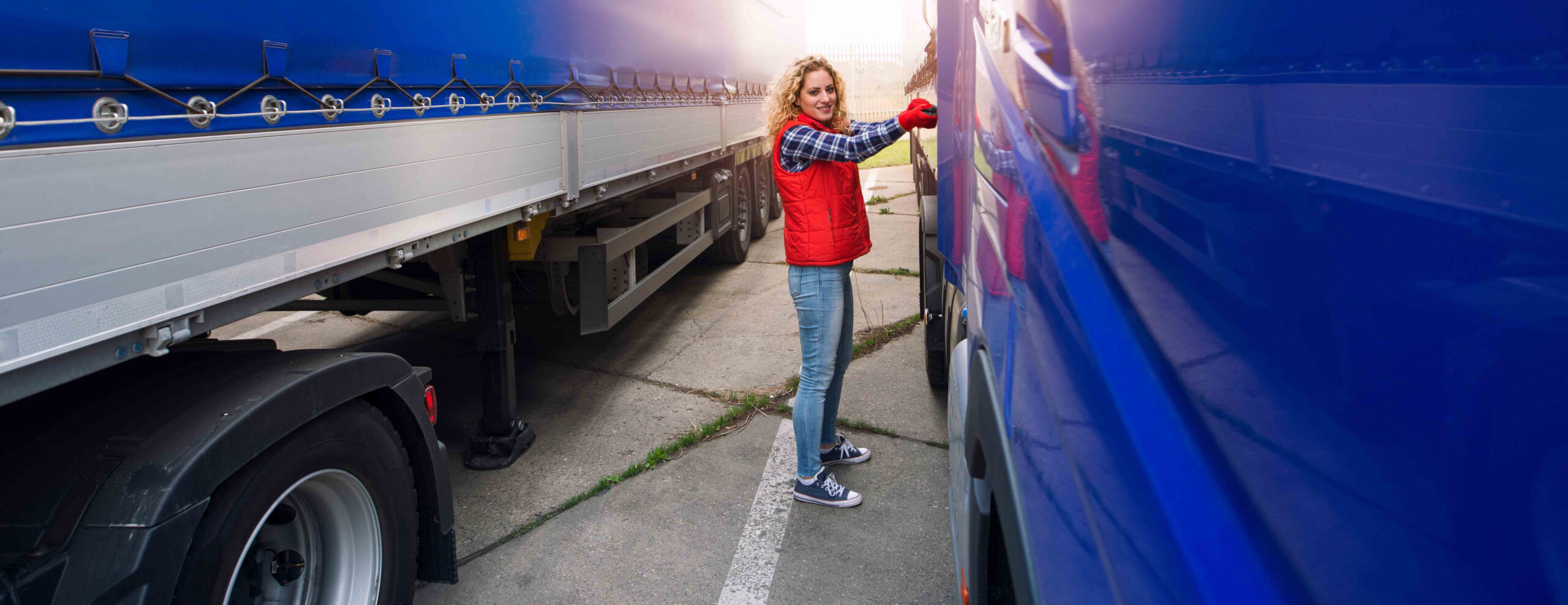Tarps are a convenient way for truckers to cover and secure their loads to protect other drivers and pedestrians, but the act of installing a tarp poses its own dangers that are often overlooked.
One of the most significant injury risks your drivers face is falls that can occur as tarps are being installed. This is a serious safety concern particularly for those who operate garbage trucks, gravel trucks, tank cars and trucks, flatbeds and other similar vehicles.
Installing a tarp is easier at a facility where spreader bars, shipper’s racks and T-posts make tarping safer and easier. You can also buy or retrofit trucks with flip arms, soft sides, curtains or sliding tarps that have ground-level handles and controls. Many forklift manufacturers provide compatible kits for applying tarps.
However, if those safety devices aren’t available, drivers can put themselves at risk, since they
can’t use hand- or footholds while maneuvering on top of a truck.
What drivers should know
Tarps can be heavy and awkward. Installing one while standing on the ground should be the first choice.
If not feasible, fall prevention methods such as facility loading platforms and catwalks, with handrails and steps, provide safe working surfaces at a proper height for tarping. Old flatbeds can be retrofitted with railings and steps to become tarping platforms.
Temporary nets or railings made of metal, plastic or canvas can be installed on flatbed trucks to prevent falls. Railed ladders, rack arms and ramps are other safe tarping platforms.
Safe installation
If an employee must climb a truck to install a tarp, they need to use a fall arrest system to securely tie in and limit the distance they could fall.
When moving a tarp by hand, use good body mechanics. Employees should face the tarp, keep their back straight, and pull the tarp out with their hands at about waist height. They should avoid twisting or pulling down with their arms overhead.
Before climbing onto a truck, they should evaluate and adjust the load for stability. Other steps to follow include:
- Use steps or a small ladder to climb and dismount. Face the truck and keep three points of contact at all times when climbing and moving around.
- When walking around and over the load, watch for gaps between items. Keep a firm grip on the tarp and ropes to prevent slipping.
- Spread the feet to shoulder-width apart and stagger them slightly for the most power and stability.
- Watch for surface winds or gusts from traffic that could cause the tarp to fly away.
- Securely fix tarps to the load.
- When working at ground level, watch for oncoming traffic.
- Never jump from the load or truck.
Safe removal
To remove a tarp, loosen it by fanning to move air underneath. Employees need to use their arms, legs and body weight to pull the tarp off the truck. They should be on a constant watch for any unstable loads. Once removed, drivers should:
- Lay the tarp out on a flat area and check for holes or damage.
- Not walk on tarps as this can cause damage to the tarp and be a slip hazard.
When picking up cargo
Drivers should plan their pickup or delivery job before driving to a site. They should know the site layout at those customers that are most frequently visited.
They should obtain advanced information on the load or material details and loading/unloading procedures, including available equipment and help. When at customers’ facilities, drivers should ask directly about the tarping policy; can it be done on-site, or do they need to find a safe area outside the facility?
They should never apply tarps on the side of a busy road or highway.
Make sure your employees understand how to keep themselves safe while installing or removing tarps from their truck.
Training topics
Train them in the proper steps for installing and removing a tarp, including the use of fall prevention gear and good body mechanics.
Other topics to cover include:
- How to use the mechanical devices on the truck or at the loading facility.
- Safe places to install or remove the tarp if it cannot happen at the pick-up or drop-off location.
- Ladder usage.
- Things to avoid, such as jumping from the truck or working in windy conditions.
